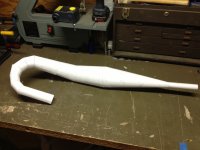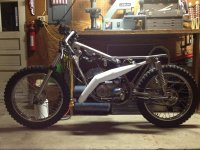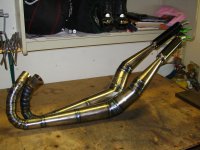Element
New Member
Hey guys. First post on the forum. I've looked everywhere on the net and I can't find the answer to this problem.
I'm attempting to build an expansion chamber for the bike I'm working on. It's a 1974 Kawasaki G4TR-E. I've done the required reading by Gordon Jennings and A. G. B, mapped the head, designed the pipe, created the 12 cone layouts for the pipe, and now I am trying to figure out how to roll the 12 pieces. I see a lot of guys using a slip roll to do the work, problem is that the pieces are anywhere from 100mm in diameter, down to 24mm, and the smallest any shop in town will do is 2".
I've seen people do 'micro breaks' where they make 20-30 bends in the metal to achieve the circular shape, but I like the appearance of the smooth-rolled material.
Any suggestions?
Thanks
I'm attempting to build an expansion chamber for the bike I'm working on. It's a 1974 Kawasaki G4TR-E. I've done the required reading by Gordon Jennings and A. G. B, mapped the head, designed the pipe, created the 12 cone layouts for the pipe, and now I am trying to figure out how to roll the 12 pieces. I see a lot of guys using a slip roll to do the work, problem is that the pieces are anywhere from 100mm in diameter, down to 24mm, and the smallest any shop in town will do is 2".
I've seen people do 'micro breaks' where they make 20-30 bends in the metal to achieve the circular shape, but I like the appearance of the smooth-rolled material.
Any suggestions?
Thanks







